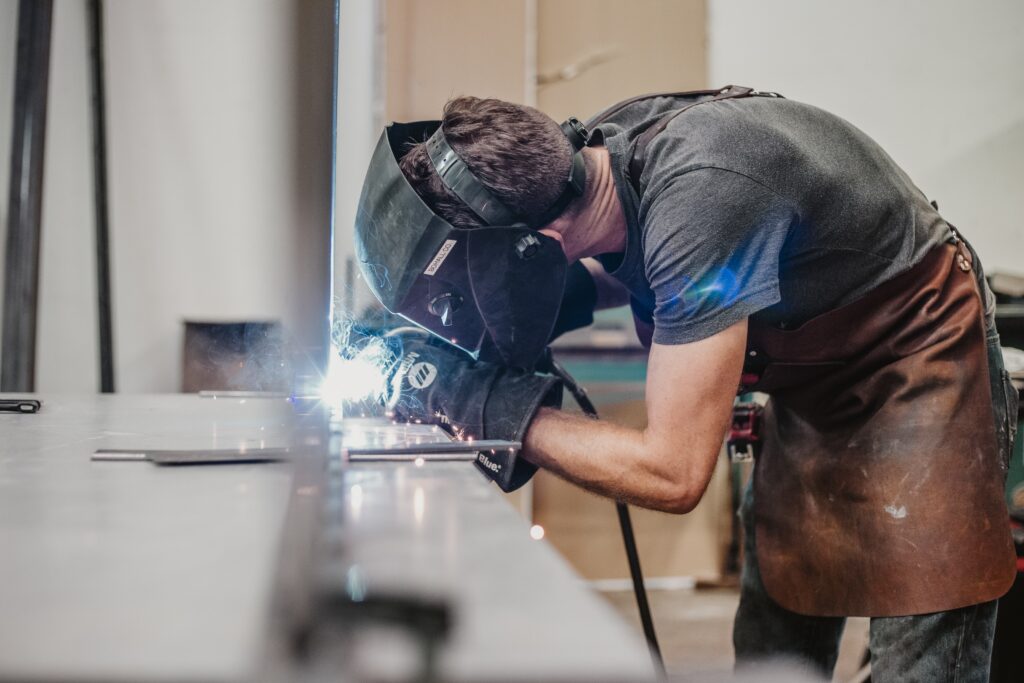
To most people, welding is welding. It’s a little more complicated than just melting material together, however, and the process used for your project will vary depending on materials and the end goal. Metal inert gas (MIG) and tungsten inert gas (TIG) are the most common processes, but what’s the difference?
Understanding the Welding Process
In the fabrication industry, the term welding refers to the processes used in fabrication to form durable joints between materials. Welding uses pressure, heat, or a combination of both to join thermoplastics, metals, and sometimes wood together for a lasting bond known as a weldment.
Generally, the materials used to form the bond are similar to those being bonded together. The welding process uses electron beams, gas flames, friction, and electric arc.
The welding methods used most commonly are MIG and TIG. Both use the heat generated by electric currents to melt the materials, and both form reliable, sturdy joints. The difference between the two is how the heat is generated, and what materials need to be joined.
MIG Welding
MIG, or metal inert gas, welding is a good choice for thicker, larger materials. This process uses a wire that acts as the filler material and the source of heat.
A MIG welder uses a protective gas shield to keep the material being welded and the bonding material from reacting with the environment. This gas also factors into the depth of penetration and the weld’s mechanical characteristics. The type of gas used as a shield will depend on the material being welded and the use of the materials.
MIG welding is a semi-automatic process that relies on a power source to feed the wire and control the length of the arc, and a manual process to control the position and speed of the wire feed.
MIG welding is faster than TIG welding, which can mean shorter lead times and lower costs of production. The final weld, however, isn’t as strong or precise as TIG welds.
TIG Welding
TIG, or tungsten inert gas, welding is a better choice for thinner and smaller materials. These machines can be used with or without the filler materials, relying on a tungsten electrode as a heat source.
TIG welding relies on an inert gas, usually helium or argon, to form an arc between a tungsten electrode and the materials being welded.
Unlike MIG welding, TIG welding is manual. It’s a slower, more precise process that is better suited for higher quality, visible welding projects
TIG welders require specialized training to achieve accuracy, but the process offers increased control. This makes TIG welding projects aesthetically more attractive than the MIG process.
Choose EDCO Fabrication for Any Welding Project
EDCO Fabrication features multiple welding tables and equipment designed for large-run jobs involving steel and aluminum. Our welders are highly trained and skilled across a wide range of welding techniques, including MIG and TIG. Still not sure which process is right for your project? Contact our team of professionals for a free consultation and quote today.
